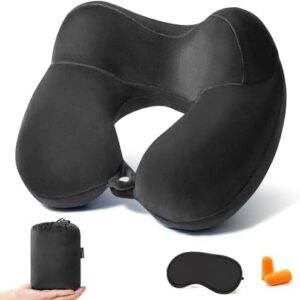I’ve been a motion sickness girlie for as long as I can remember. Family road trips, bus rides, ferries, bumpy flights, taxis, and high-speed trains have all done me dirty. I know all the tricks in the book: sit facing forward, front of the car but back of the boat, eyes on the horizon, and don’t dare read a book or look at your phone.
That last one is easier said than done, though. Like most people who deal with car sickness (which affects nearly 50% of adults!)‚ I’ve had to accept that relying on my phone for entertainment on the road just isn’t an option. But sometimes a little screen time is necessary, like when I need to look up hotel info, navigate for the driver, or curate the perfect playlist. And feeling nauseous from a few minutes of passenger princess phone tasks straight-up sucks. (True story: In many car sickness studies, researchers literally use a “misery scale” rating system.)
So when Apple announced they were including an anti-motion sickness feature in iOS 18 (released on September 16) called Vehicle Motion Cues, I was psyched to try it out. When you focus your eyes on something like a phone or book while in a moving vehicle, it tends to make motion sickness worse. The new feature—achieved via moving dots that slide around the peripherals of your screen—aims to help reduce this nauseating effect when you’re using an iPhone or iPad.
If, like me, you’ve long given up on reading, scrolling TikTok, or even texting people back while in the rear seat of a cab, Vehicle Motion Cues sounds pretty enticing—but also, too good to be true. Here’s what science has to say, plus my personal experience trying it out, for better or worse.
Why does motion sickness happen in the first place?
The short answer: Experts aren’t entirely sure. “There are different theories, and there’s not one that all researchers agree on,” Behrang Keshavarz, PhD, a senior scientist studying human perception, virtual reality, and motion sickness at The KITE Research Institute, tells SELF. “The most prominent theory is called sensory conflict or sensory mismatch.”
The idea is that, under normal circumstances, your body has a good idea of where you’re positioned in space thanks to sensory information coming from sources like your vision, vestibular system (which gauges balance), and proprioceptive system (which handles body awareness). Usually, all this sensory info matches up. But when you’re in a car or other moving vehicle, there’s an unexpected discrepancy between what you see and what you feel—and experts think that’s the root cause of getting motion sick, Dr. Keshavarz says.
This effect is even more pronounced when you focus your eyes on something fixed inside the car, like your phone or a book. “Your vestibular sense and muscles can sense the acceleration, the turning, and all that, but if you’re focusing on a book, your eyes don’t. They’re telling you that you’re stable because they don’t see the movement,” Dr. Keshavarz explains.





